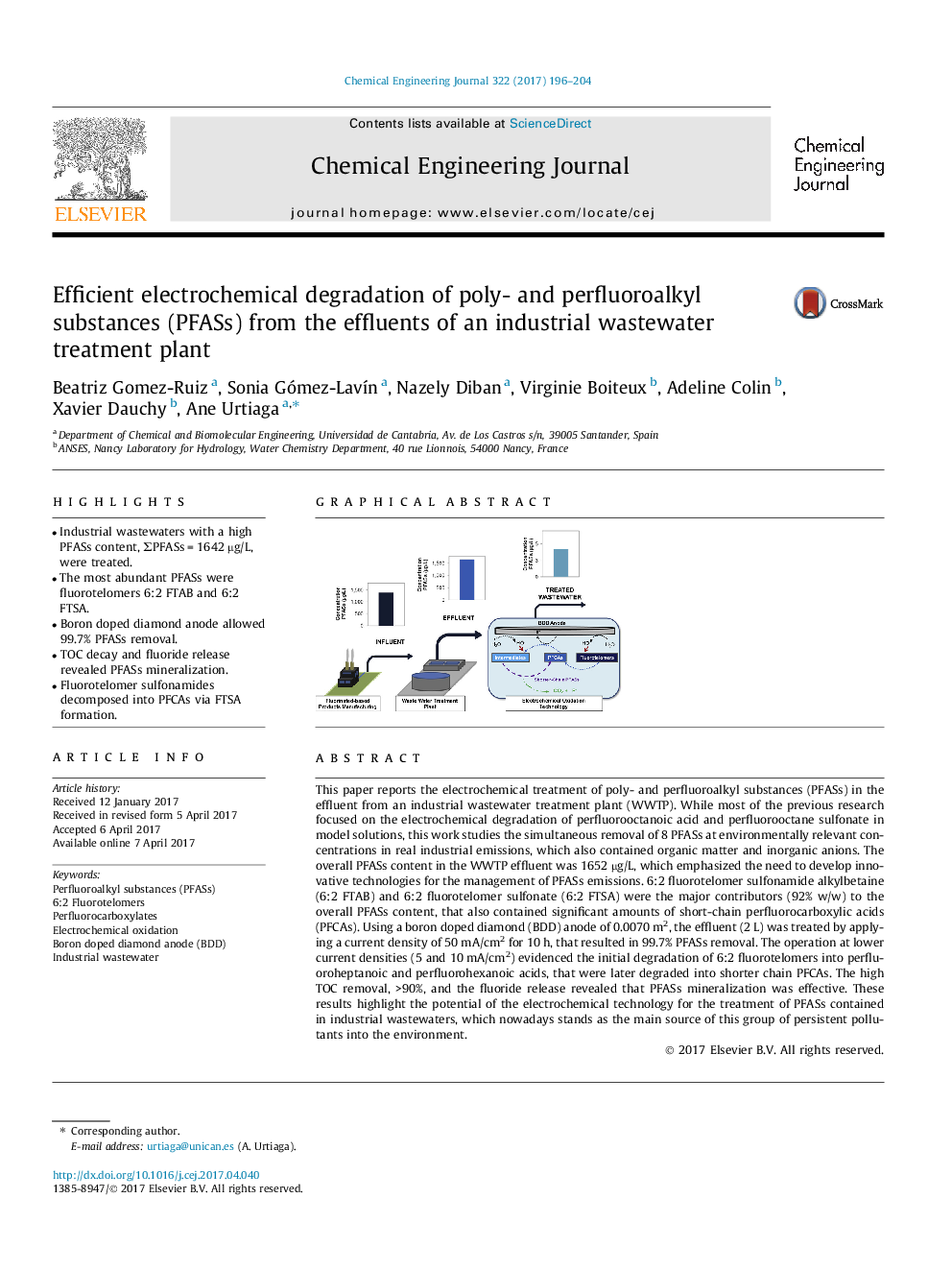| Article ID | Journal | Published Year | Pages | File Type |
|---|---|---|---|---|
| 6465628 | Chemical Engineering Journal | 2017 | 9 Pages |
â¢Industrial wastewaters with a high PFASs content, ΣPFASs = 1642 µg/L, were treated.â¢The most abundant PFASs were fluorotelomers 6:2 FTAB and 6:2 FTSA.â¢Boron doped diamond anode allowed 99.7% PFASs removal.â¢TOC decay and fluoride release revealed PFASs mineralization.â¢Fluorotelomer sulfonamides decomposed into PFCAs via FTSA formation.
This paper reports the electrochemical treatment of poly- and perfluoroalkyl substances (PFASs) in the effluent from an industrial wastewater treatment plant (WWTP). While most of the previous research focused on the electrochemical degradation of perfluorooctanoic acid and perfluorooctane sulfonate in model solutions, this work studies the simultaneous removal of 8 PFASs at environmentally relevant concentrations in real industrial emissions, which also contained organic matter and inorganic anions. The overall PFASs content in the WWTP effluent was 1652 µg/L, which emphasized the need to develop innovative technologies for the management of PFASs emissions. 6:2 fluorotelomer sulfonamide alkylbetaine (6:2 FTAB) and 6:2 fluorotelomer sulfonate (6:2 FTSA) were the major contributors (92% w/w) to the overall PFASs content, that also contained significant amounts of short-chain perfluorocarboxylic acids (PFCAs). Using a boron doped diamond (BDD) anode of 0.0070 m2, the effluent (2 L) was treated by applying a current density of 50 mA/cm2 for 10 h, that resulted in 99.7% PFASs removal. The operation at lower current densities (5 and 10 mA/cm2) evidenced the initial degradation of 6:2 fluorotelomers into perfluoroheptanoic and perfluorohexanoic acids, that were later degraded into shorter chain PFCAs. The high TOC removal, >90%, and the fluoride release revealed that PFASs mineralization was effective. These results highlight the potential of the electrochemical technology for the treatment of PFASs contained in industrial wastewaters, which nowadays stands as the main source of this group of persistent pollutants into the environment.
Graphical abstractDownload high-res image (127KB)Download full-size image
